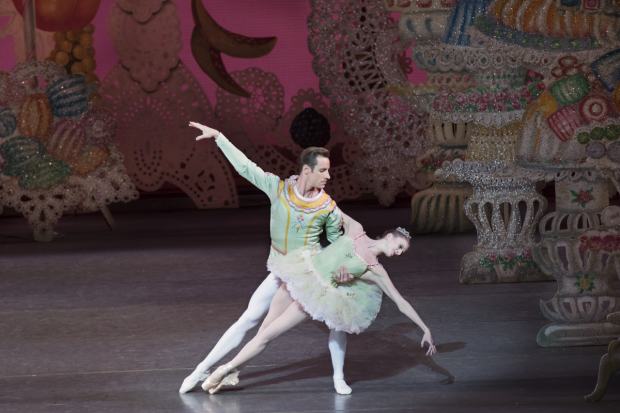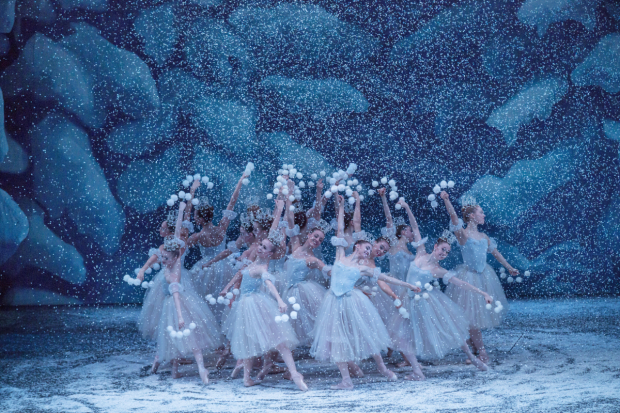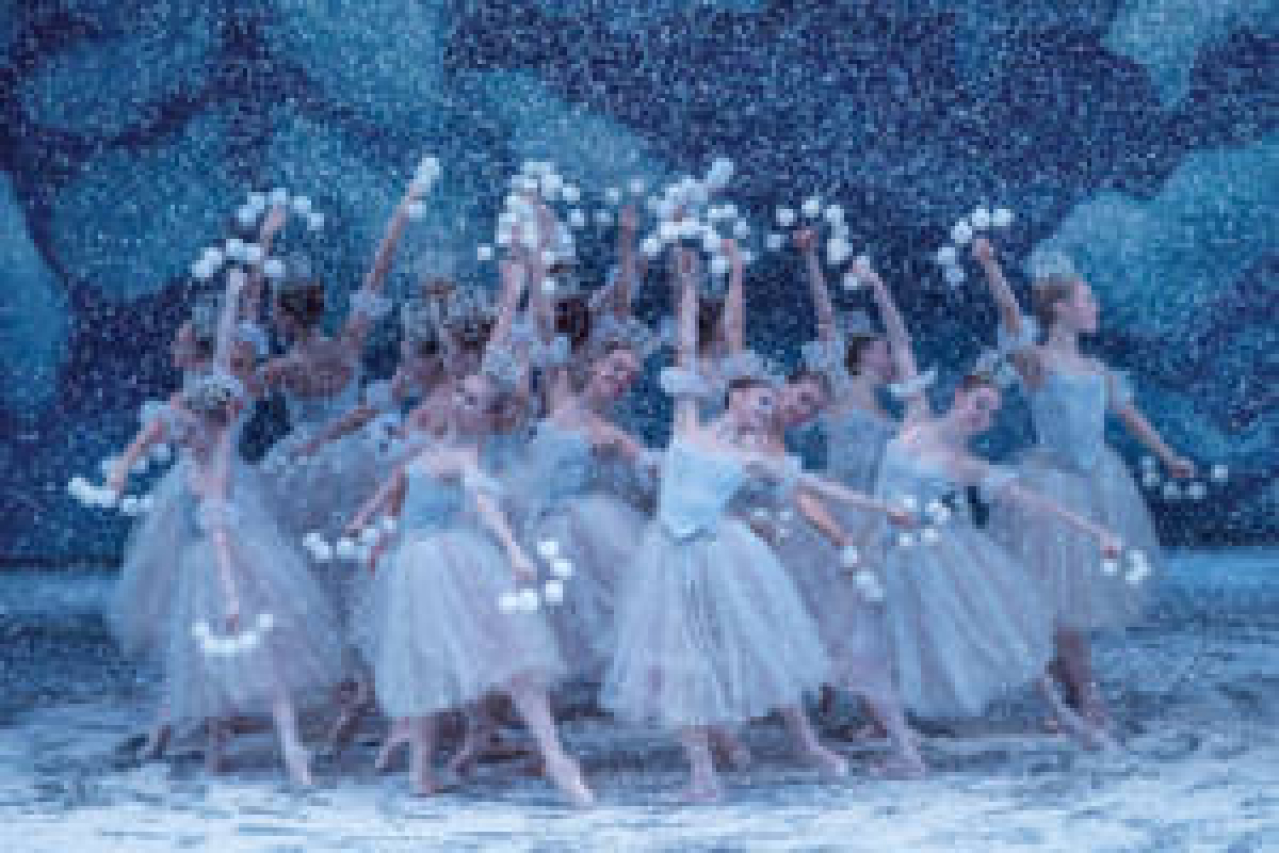George Balanchine's The Nutcracker

(© Paul Kolnik)
It's the great holiday tradition of the fine arts world and it's still running strong in New York, despite the death of the choreographer over 33 years ago: That's George Balanchine's The Nutcracker at Lincoln Center, which is still the definitive production of Pyotr Ilyich Tchaikovsky's glittering fantasy of Christmastime enchantment and adventure.
While William Christensen's staging for the San Francisco Ballet predates Balanchine's by a decade, the New York City Ballet production (first mounted in 1954) is arguably the one that really began the Nutcracker ritual, in which every major American ballet company presents the show during the holidays, using the proceeds from this reliable blockbuster to subsidize the rest of the season. As Balanchine's production demonstrates, this success has to do with a combination of technically impressive dancing, eye-popping design, and an actual army of children.
The story begins at the annual Christmas soirée of the Stahlbaum family. Daughter Marie (the adorable Maria Kashvili) eagerly awaits the arrival of everyone's favorite one-eyed uncle, Herr Drosselmeier (an authoritative Sean Suozzi). He brings a variety of wonders and toys, including a small nutcracker doll that Clara falls in love with. She sneaks out of bed that night to find the doll under the Christmas tree, but when she dozes off she finds herself shrunk down to his size.
Marie becomes caught in the crossfire of a war between the Nutcracker (Sawyer Reo) and the Mouse King (Aaron Sanz). After triumphing over their rodent foe, the Nutcracker and Marie travel through a blizzard to the Land of Sweets, ruled over by the majestic Sugarplum Fairy (Sterling Hyltin). To reward their victory, she places her guests on a dais where they can enjoy candy and cakes as they watch a celebratory pageant of global treats.
As is typical in the work of Tchaikovsky, this is where the plot effectively ends and the hardcore dancing begins: A group of 10 dancers portray hot chocolate with a Spanish flair (yes, there are castanets). The impressively flexible Megan LeCrone delivers a sensuous performance as Arabian Coffee. Sporting a questionably tasteful Manchu queue for Chinese Tea, Antonio Carmena jumps out of a box and manically touches his toes in midair. As Dewdrop, the high-flying Ashley Bouder leads the Waltz of the Flowers with unyielding joy. Making the biggest impression as the lead Russian Candy Cane, Daniel Ulbricht practically suspends himself in the air while making a double-pass through a hula hoop. If he hadn't chosen ballet, he might have made a fine performer in Cirque du Soleil.
Hyltin surveys them all at the outset, like the Secretary General of the United Nations of candy. Her commanding presence is undergirded by a grace that makes her appear weightless: Her flittering pas de bourrée couru is more magical than anything Walt Disney could draw for Tinker Bell.

(© Paul Kolnik)
As her dashing Cavalier, Andrew Veyette flawlessly executes a series of beautifully extended jetés en manège, traveling across every inch of the stage like a knight surveying his realm. He comes together with Hyltin for a breathtaking pas de deux, in which the two principals display near-superhuman abilities, including a moment in which he drags her forward while she is balanced en pointe. You may gasp.
The underscoring for this moment is as lush and dramatic as you'll ever hear in a live performance. Andrew Sill conducts the 62-piece orchestra with an attention for dynamics and tempos that ensure that every passage goes off without a hitch. Kurt Nikkanen's first-act violin solo is especially lovely.
A stellar ensemble plays roles as varied as flowers, mice, and angels. A huge number of children appear in the production, most impressively as the Nutcracker's army during an epic battle scene with the mice (this rigidly militaristic dance was choreographed by Jerome Robbins, naturally). The snowstorm dance at the end of the first act is stunningly beautiful: 16 ballerinas cluster together in tight formation like an actual blizzard, moving rapidly across stage in perfect unity.

(© Paul Kolnik)
Sixty-two years after it first played New York, this production is still running because Balanchine's choices feel intrinsic to the music, as if no other move could be made: Every lift, leap, and fouetté is essential, not so much to the story (which stops by Act 2), but to Tchaikovsky's soaring music. The same goes for Rouben Ter-Arutunian's colorful sets and Karinska's whimsical costumes. Through sweeping strings and stately brass, the composer calls for a world of pure, candy-coated fantasy and that is exactly what this is. Leave your hidden agendas and stealthy messaging at the door. This is unapologetic escapism.











